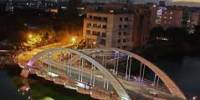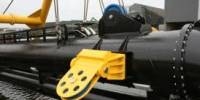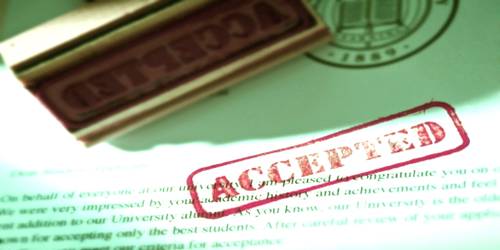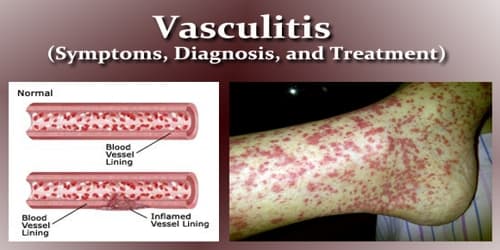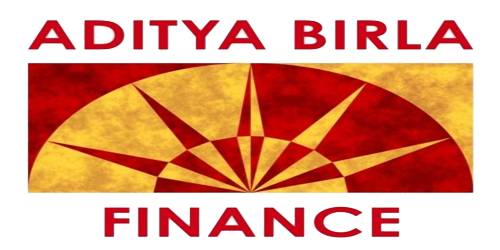Wet Ink Technology:
In this printing technology only Cyrel plate uses to different types of FOCUS Machines. Five color Machines, which could print four colors on the front side and one color on the backside of the fabric in one run and also cut the label, using an Ultrasonic Cutter. Two color Machines, which could print two colors only the front side of the fabric, in one run.
Advantages of Wet ink printing:
- High in quality.
- Cheap for large quantities.
- Cost & time effective.
- The capacity per day 2 mil
Limitation or Disadvantages of Wet ink printing:
- Ink, used for printing need to be careful cause if it mix with water can be daubed
- Can’t print more than four colors at a time.
- Approximately 50% or 60% ink are wasted.
- Can’t print on sheet, print on only fabric rolls.
- Not economical for small quantities.
- Label Wastage, around 300 labels per run.
- Takes time to set the machine or do any change.
- Fabric width Minimum 11mm & Maximum 41mm.
- Label length Minimum 13mm & Maximum 260 mm.
Hot Stamp Technology
- Thermal technology is used to print by Dry foil ink (Carbon ink).
- This printer uses a polymer plate to make the impression.
- Can print on front and reverse sides of the material using 4-5 colors.
- The labels also be cut simultaneously, using an Ultrasonic Cutter.
- The print quality can be varied, using the temperature controls.
Advantages Hot Stamp Technology
- Wastage ratio very low.
- Takes lesser time to set up the machine.
- Curing process is not needed.
- The Out put for 8 hours is 30,000 labels.
Limitation or Disadvantages Hot Stamp Technology:
- Quality can not bring up to the wet ink standard.
- Printing speed is slower, in comparison to Rotary printing.
- Fabric width Minimum 11mm and Maximum 40 mm.
- Fabric length Minimum 25mm and Maximum 45mm.
Material types:
Model 120 1k widths 20, 25, 32 mm.
Model ATT-1 widths 11, 15, 32, 40 mm.
Thermal
Paxar Bangladesh used this printing technology only for semi-finished goods. Initially the colored part of a label that has a bar code is printed in flexography and bar codes are printed using thermal technology.
Types of Machine:
Three printers are available in thermal department:
- TEC Printer
-Made by TOSHIBA
- 676 Printer
-Made by PAXAR
- 686 Printer
-Made by PAXAR
- Monath Matching
-For Printing color Stiker
5. Lok printer
– 2 color printing
– for febric
6 P5300ZT
-Print only Leather
Technology used by Thermal:
There are two computers with two systems loaded with two types of printers.
- One is PC Mate system which supports Paxar 686 machine for printing. It is for printing narrow labels up to 130mm.
- Another one uses KEA Updated format system and supports Equila software with the printing machine Tec 882. This one can prints wider labels up to 220mm.
Limitation:
- Width limitation: Width limitation also exists. Maximum width limit is 200mm.
- Thermal machine is used to print only bar code. Moreover, thermal machine can be used for cutting purpose also. But only square cut of the entire sticker can be possible with the help of thermal.
- All color cannot be printed in thermal. There are some selective colors like black, white, blue and red etc
- Cost is high due to excess foyal. For example, 5 meter foyal is needed for five meter material (like ribbon)
WOVEN
Woven department produces woven labels. Only Yarns are the raw material, which used for produce Woven Labels. Yarn is used to weave as Warp ends (horizontal yarn) and Weft ends (vertical yarn). The work has to be done with a lot of patience and concentration. If something goes wrong a massive loss will occur and a result Paxar will lose its customer.
In the production flow chart (that is shown in the beginning), we can see that the weaving designs are done in the weaving room for designing Woven labels. Two special soft wares that are used to do the weaving designs are:
- MUCAD
- EAT
Types of Looms:
Two types of looms that produce the labels are:
- Needle Loom weaving.
- Rapier Loom weaving.
The needle loom woven labels takes more time to produce than the Rapier Loom
Labels and also it is more expensive than rapier Loom Label. hot cut and ultrasonic cut use for separate individual label. If the label goes through hot cut then the edges of the labels are not smooth and this makes the label uncomfortable for the user. If the label goes through ultrasonic cut then the edges of the labels are smooth but the labels cannot take hard wash
Needle Loom Weaving:
Needle loom gives the label a high quality and makes it comfortable for the user. This label needs to go through the calendaring, as there is a tension in the label once the label comes out of the needle loom. Capacity 8-hour/day, approx. 75,000 – 100,000 labels. This is 4-color loom and produce Minimum 10mm & Maximum 32mm label. Mainly needle loom weaving label uses for kids wear.
Rapier Loom Weaving:
Rapier Loom technology takes long time to set up and labels are produced in batches and use hot cut blade for separate. No calendaring is required for rapier Loom labels. Capacity 8-hour/day, approx. 100,000 – 150,000 labels. This is 8-color loom and 1 loom which is produce 10-color label.
Difference between Needle loom and Broad loom:
Needle Loom: In case of needle loom slitting and fusing is not needed. The edge of the needle loom is woven but not slit. The yarn should be ended at the end of the label not at the middle. If it seems ended at middle then at least a single yarn should be continued to the end of the label. In PAXAR, BD both white and black satin are available but damask is not available.
Satin-We can only develop satin label of having11 mm width.
Broad Loom or Rapier Loom: Both slitting and fusing take place. The edge of the broad label is slit not woven. The yarn of a particular color of the back part can be ended at any point. In PAXAR, BD only white satin (white warp) and damask are available.
Satin- No extra warp part or taffeta part will be there. Usually satin of high quality, expensive and glassy.
Damask-An extra warp part will be there. It involves direct design on the tafetta (warp part) part also. Damask is not glassy.
* White or black warp can be defined by identifying the cutting part also.
In broad loom there are only 1 machine is used for white satin. Moreover, 13 machines are used for damask.
Types of yarn:
Two kinds of yarns are used for produce woven labels,
- WARP: Two color of warp yarn are available. White and Black. These two types of yarn contain 100% polyester filament yarn- with 100 Denier. This type of yarn set vertically.
- WEFT: WEFT has capacity to sewing eight colors at a time and its color can be change. When it needed. This type of yarn also contain 100% polyester but denier level is differ from WARP level such as, 75 denier, 100 denier, 150 denier (use very few) etc.
Designing Process:
Step that have to follow to process a design are as below:
- Artwork/ Physical work
- Select the machine according to length, width and number of hooks but PAXAR has only 1152 hooks machine. So it can’t produce label with more or less hooks. Then they contact with customer and asked them whether they agree to receive label with 1152 hooks.
- Prepare design for customer.
- Machine language file.
- Output
- Sampling for approval. If the layout is approved by the customer it’s go for production.
File types:
When design requires any type of change it can use two types of file. These are:
- UPT file (Machine language file), User (designer) can’t change this.
- Design file, User can change the design.
LITHO
Paxar Bangladesh is processed Tickets and tags in this printing section, which is also called Offset printing. Different types of boards art papers, offset papers are used for printing Tickets and tags. The process that is involved in printing in Litho Machine is as follows:
- Factory sheet
- Planning Room
- Designing in the MAC Room.
- Positive film Making
- Proof Reading
- Plate Making
- Board measurement
- Send to cutting machine for required board size
- Impression
- Sent for production in Litho printing press.
- Proof reading done again in Litho printing process. (The proof reading is done for color, product, size, stock, quality)
- Varnishing of the product takes place (Matt or Gloss)
Different types of Varnish:
Gloss, Matt, UV Gloss, UV Matt, Transparent, Satin, Aqua
Matt- Spot & Flood
Gloss- Aqua (water based), Oil based, Spot gloss & Flood gloss
UV (Ultra violet)- Curing process is involved only in case of UV varnishing.
Spot- Some portion of the ticket is extra coated.
Flood-The ticket is wholly extra coated.
Afterwards the product goes for its various processes such as cutting, die cutting, creasing, perforation, cross-slits, etc. according to the customer requirements.
Finishing Methods:
The boards are sent for cutting (Die cut & Polar cut)
Checking for Good / Bad (Label that are spoiled are rejected)
Counting by Machine (Number of ticket in a bundle)
Wrapping (Goods are packing for delivery)
Dispatch
Using Die or Polar Cut machine we can do Litho Finishing.
Polar Cut Machine-It is used for cutting straight cut shape.
Die cutter Machine-Die cutter machine is used for cutting different shape like round, ticket
Solid Color- Any pantone color is solid color
Special Color- These
- and seal after Cutting. This machine also can use for hot cut by replacing the Ultrasonic horn by setting a GB knife.
- But cut: Here adhesive fabric is used. The cutter cut the adhesive fabric not the backing paper. This procedure is only used for cutting adhesive fabric.
Different types of folding method:
Labels are fold according to factory sheet. In factory sheet it is mentioned that what type of folding it would be. PAXAR Bangladesh Limited use following folding method:
- Center/Loop Fold
- End Fold
- Manhattan Fold
- Mitre Fold
Heat Transfer:
Production procedure Of Heat transfer:
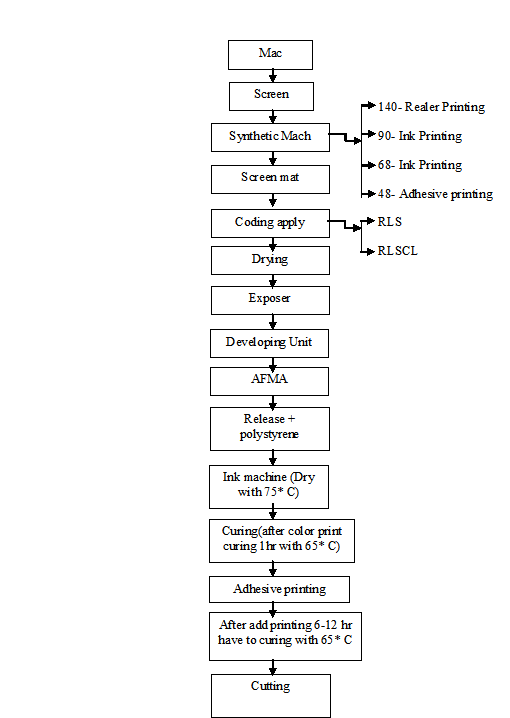
RFID:
Radio frequency identification (RFID) technology uses microchips to wirelessly transmit product serial numbers to a scanner without the need for human intervention. RFID creates new opportunities for manufacturers, suppliers and retailers. Customers can avail of improved customer service.
Imagine the enhanced opportunities that can be afforded:
- Accurate data capture
- Item tracking through the entire supply chain
- Receiving/return of goods
- Logistics management
- Warehouse management
- Security/anti-theft
- Anti-counterfeit
This is one of the fastest emerging technologies of the auto-identification industry of which Paxar is heavily involved in developing, in conjunction with leading players from the retail and technology sectors.
The technology itself is capable of enabling major changes in the way supply chain can be managed, and offers users the information that is essential if the right products are to be in the right place at the right time, without delays or missed selling opportunities.
The advantages:
- Non-line-of-sight reading
- Tags are readable at distance
- Tags can withstand hostile environments, such as temperature, dust and shock
- Tags can be re-programmed and re-used
- Tags can be bulk read
- The ability to be data specific
The benefits to your company:
- Financial gain
- Data management
- Supply chain management
- Stock and product availability control
- Error reduction
- Brand protection and security
- Improved logistics, storage, distribution and production control
DESPATCH:
Prepare Delivery Challan:
- Receive Document from Shipping & logistics Department.
- Prepare delivery challan.
- Send document to credit control department.
Document to be need to dispatch Goods:
Dispatch people receive the goods from production department by compare with factory sheet and after make ready for dispatched. If the orders are to be delivered later or withheld, then the cartons will be stored on the “awaiting delivery” or “Hold” racks, until instructed by any authorized personnel. Dispatch department delivery the goods after getting the clearance certificate from Export / Import department. Document that are needed to dispatch an order are:
- Delivery challan with customer seal & signature.
- Delivery challan with customs assessment.
- Delivery challan with Bank endorsement.
- Truck Receipt.
- Bill of Exchange with customer seal & signature.
- Consumption statement with customs assessment.
- Full set EP with Exp. Form.
- Copy of bill of entry.
- IC (If need).
In case of urgent delivery:
- Need Approval for urgent delivery by Manager and Finance Controller (Note will be there)
- Presence of CSR regarding goods to delivery.
Concept of customer service
Generally, the advantage or benefit that company gives to its clients is called customer service. Customer service means giving customers what they want or for what they come to a company.
Customer service is the intangible benefits those the company provides to its clients for satisfying them and creating a higher confidence in their mind about the company.
Core Ethics of Customer service:
In order to satisfy customer, different organization maintain various interesting ethical statement given by the famous personalities. Who were brilliant in their respective field. Some of the interesting core ethics of customer service.
- Customer service program teaches us to say “please” and “Thank You” give “smile” and” Handshakes”
- It is customers, who spread the message about your product and make its reputation. So, build up a good image of the organization in customers mind.
- Keep-down expectation. Do not claim or advertise more than what can’t be delivered.
- We are not doing him a favor by serving him, he is doing us a favor by giving us an opportunity to do so.
- The product and service delivery are intrinsically fused in the customer mind. Your product is also judged by service delivery attached to it.
- A customer is the important visitor in our premises.
- He is not interruption on our work; he is the purpose of it.
- He is not an outsider on our business; he is a part of it.
Customer Service Effectiveness survey
Business research covers a wide range of phenomena. For managers the purpose of the research is to fulfill the need for knowledge of organization, the markets, the economy or other area of uncertainty. I conduct a customer service effectiveness survey for paxar Bangladesh Ltd.(A subsidiary of Avery Dennison corporation). I was visit 20th customers on sample basis, and find out the comments of customers about paxar Bangladesh Ltd.(A subsidiary of Avery Dennison corporation).
Managerial value of This Survey
I have argued that survey facilitates effective management. At many companies survey drives every aspect of major decision making. The prime managerial value of this survey is that is reduce uncertainty by providing information that improves the decision making process. The decision making process associated with the development and implementation of a strategy involves four interrelated stages:
- Identifying problems or opportunities.
- Diagnosing and assessing problem or opportunities.
- Selecting and implementing a course of action
- Evaluating the course of action.
Survey
To fulfill my survey I defining the problem, prepare a questioners, select sample size, collect data, analyze data.
12.3.1 Survey Findings
Avery customer service Contact-Friendliness
Frequency | Percent | Valid Percent | Cumulative Percent | ||
| Valid | Fair | 1 | 5.0 | 5.0 | 5.0 |
| Good | 14 | 70.0 | 70.0 | 75.0 | |
| Excellent | 5 | 25.0 | 25.0 | 100.0 | |
| Total | 20 | 100.0 | 100.0 | ||
70% of customer recommends that customer service friendliness is Good. 25% customer recommends Excellent and 5% recommends fair.

Positive Attitude
Frequency | Percent | Valid Percent | Cumulative Percent | ||
| Valid | Fair | 2 | 10.0 | 10.0 | 10.0 |
| Good | 13 | 65.0 | 65.0 | 75.0 | |
| Excellent | 5 | 25.0 | 25.0 | 100.0 | |
| Total | 20 | 100.0 | 100.0 | ||
65% of customer recommends that customer service Positive Attitude is Good. 25% customer recommends Excellent and 10% recommends fair.

Product Knowledge
Frequency | Percent | Valid Percent | Cumulative Percent | ||
| Valid | Fair | 1 | 5.0 | 5.0 | 5.0 |
| Good | 14 | 70.0 | 70.0 | 75.0 | |
| Excellent | 5 | 25.0 | 25.0 | 100.0 | |
| Total | 20 | 100.0 | 100.0 | ||
70% of customer recommends that customer service Product Knowledge is Good. 25% customer recommends Excellent and 5% recommends fair.

Speed of Response
Frequency | Percent | Valid Percent | Cumulative Percent | ||
| Valid | Poor | 1 | 5.0 | 5.0 | 5.0 |
| Fair | 4 | 20.0 | 20.0 | 25.0 | |
| Good | 14 | 70.0 | 70.0 | 95.0 | |
| Excellent | 1 | 5.0 | 5.0 | 100.0 | |
| Total | 20 | 100.0 | 100.0 | ||
70% of customer recommends that customer service Speed of Response is Good. 20% customer recommends Excellent and 5% recommends fair and 5% recommends Poor.

Problem Solving Ability
Frequency | Percent | Valid Percent | Cumulative Percent | ||
| Valid | Poor | 2 | 10.0 | 10.0 | 10.0 |
| Fair | 7 | 35.0 | 35.0 | 45.0 | |
| Good | 11 | 55.0 | 55.0 | 100.0 | |
| Total | 20 | 100.0 | 100.0 | ||
55% of customer recommends that customer service Problem Solving Ability
Is Good. 35% customer recommends Fair and 10% recommends Poor.

Timely Returning of call
Frequency | Percent | Valid Percent | Cumulative Percent | ||
| Valid | Poor | 1 | 5.0 | 5.0 | 5.0 |
| Fair | 5 | 25.0 | 25.0 | 30.0 | |
| Good | 14 | 70.0 | 70.0 | 100.0 | |
| Total | 20 | 100.0 | 100.0 | ||
70% of customer recommends that customer service Timely Returning of call
Is Good. 25% customer recommends Fair and 5% recommends Poor.

Contact ability
Frequency | Percent | Valid Percent | Cumulative Percent | ||
| Valid | Poor | 3 | 15.0 | 15.0 | 15.0 |
| Fair | 3 | 15.0 | 15.0 | 30.0 | |
| Good | 12 | 60.0 | 60.0 | 90.0 | |
| Excellent | 2 | 10.0 | 10.0 | 100.0 | |
| Total | 20 | 100.0 | 100.0 | ||
60% of customer recommends that customer service Contact ability of call Is Good. 10% customer recommends Excellent, 15% recommends Fair and 15% recommends Poor.

Avery product- Data Accuracy
Frequency | Percent | Valid Percent | Cumulative Percent | ||
| Valid | Fair | 1 | 5.0 | 5.0 | 5.0 |
| Good | 13 | 65.0 | 65.0 | 70.0 | |
| Excellent | 6 | 30.0 | 30.0 | 100.0 | |
| Total | 20 | 100.0 | 100.0 | ||
65% of customer recommends that Data accuracy of product Is Good. 30% customer recommends Excellent, 5% recommends Fair.

Material quality
Frequency | Percent | Valid Percent | Cumulative Percent | ||
| Valid | Good | 11 | 55.0 | 55.0 | 55.0 |
| Excellent | 9 | 45.0 | 45.0 | 100.0 | |
| Total | 20 | 100.0 | 100.0 | ||
55% of customer recommends that Material quality of product Is Good. 45% customer recommends Excellent.

Color Consistency
Frequency | Percent | Valid Percent | Cumulative Percent | ||
| Valid | Poor | 1 | 5.0 | 5.0 | 5.0 |
| Good | 11 | 55.0 | 55.0 | 60.0 | |
| Excellent | 8 | 40.0 | 40.0 | 100.0 | |
| Total | 20 | 100.0 | 100.0 | ||
55% of customer recommends that Color consistency of product Is Good. 40% customer recommends Excellent.5% recommends Poor.

Bar code Readability
Frequency | Percent | Valid Percent | Cumulative Percent | ||
| Valid | Fair | 2 | 10.0 | 10.0 | 10.0 |
| Good | 12 | 60.0 | 60.0 | 70.0 | |
| Excellent | 6 | 30.0 | 30.0 | 100.0 | |
| Total | 20 | 100.0 | 100.0 | ||
60% of customer recommends that Bar code readability of product Is Good. 30% customer recommends Excellent.10% recommends fair

Competitive price
Frequency | Percent | Valid Percent | Cumulative Percent | ||
| Valid | Excellent | 1 | 5.0 | 5.0 | 5.0 |
| Good | 6 | 30.0 | 30.0 | 35.0 | |
| Fair | 12 | 60.0 | 60.0 | 95.0 | |
| Poor | 1 | 5.0 | 5.0 | 100.0 | |
| Total | 20 | 100.0 | 100.0 | ||
60% of customer recommends that pricing is fair. 30% customer recommends Good.5% recommends Excellent.5% recommends Poor.

Avery Packing And Distribution-
Accurate Packaging
Frequency | Percent | Valid Percent | Cumulative Percent | ||
| Valid | Disagree | 3 | 15.0 | 15.0 | 15.0 |
| somewhat agree | 11 | 55.0 | 55.0 | 70.0 | |
| Agree | 6 | 30.0 | 30.0 | 100.0 | |
| Total | 20 | 100.0 | 100.0 | ||
55% of customer recommends that accurate packaging customer somewhat agree 30% customer recommends they agree and 15% customer they disagree.

Lead time
Frequency | Percent | Valid Percent | Cumulative Percent | ||
| Valid | Strongly Disagree | 5 | 25.0 | 25.0 | 25.0 |
| Disagree | 7 | 35.0 | 35.0 | 60.0 | |
| somewhat agree | 8 | 40.0 | 40.0 | 100.0 | |
| Total | 20 | 100.0 | 100.0 | ||
40% customer somewhat agree about lead time 25% customer they strongly disagree and 35% customer they disagree about Lead time.

Good Packing Method
Frequency | Percent | Valid Percent | Cumulative Percent | ||
| Valid | Disagree | 6 | 30.0 | 30.0 | 30.0 |
| somewhat agree | 12 | 60.0 | 60.0 | 90.0 | |
| Agree | 2 | 10.0 | 10.0 | 100.0 | |
| Total | 20 | 100.0 | 100.0 | ||
60% customer somewhat agree about packing method 30% customer they disagree and 10% customer they Agree about packing Method

Preface:
The study found that the customer satisfaction of Paxar Bangladesh Ltd.(A subsidiary of Avery Dennison corporation) is at a fairly appreciable level. Customer need to be satisfied, because a satisfied customer will talk about the things he is very justifiably enjoying. A satisfied customer’s statement is more than a thousand commercial advertisements. People depends on the people this is the mode of Human civili8zation. Our civilization flourishes on the trust and compassion people puts on gets from people.
Recommendation:
- After completing the survey findings I recommend that customers satisfied regarding customer service of paxar Bangladesh Ltd. But they are very much dissatisfied about lead time, packing method. Customers they are not getting the good on time and they are sometime getting short quantity. I found the weakness with these two points.
- Delay of System Upload (KEA). KEA does not upload timely in many cases. That’s why CSO are not found any Idea about production stutas. That makes the customer Unhappy.
- CSO should have the involvements on production.
- Delay process Of QC Department.(layout after approved by the customer not need to recheck the Positives or Negatives).
- Need to improved KEA system.
- Need to recruit Skilled Operator.
- Increase more machine and machinery to improve the production capacity of the factory.
- To maintain the technological support strong, hire more efficient IT expert.
CONCLUSION:
Paxar Bangladesh Ltd. (A subsidiary of Avery Dennison corporation) provides higher standards in every works, that’s why Paxar Bangladesh Ltd.(A subsidiary of Avery Dennison corporation) is Type A class industry in Bangladesh or BEPZ. They always satisfied customers that’s why Paxar Bangladesh Ltd.(A subsidiary of Avery Dennison corporation) capture the major market share of Bangladesh RIS industry. Paxar Bangladesh Ltd.(A subsidiary of Avery Dennison corporation) incising there production capacity day by day, adding new technology that’s help to developing manufacturing possibilities of Bangladesh and help to decrease the unemployment of Bangladesh and help the country to increase Export. Teamwork, working environment and equality is emphasized highly in this organization, from other multinational organization in Bangladesh. In addition, In Paxar Bangladesh Ltd.(A subsidiary of Avery Dennison corporation) everybody is treats as equal irrespective of his or her job responsibilities and designation. Thus, Paxar Bangladesh Ltd. (A subsidiary of Avery Dennison Corporation). is providing the best possible work environment and opportunities for personal and professional growth.
Some are parts:
Report on Paxar Bangladesh Ltd (Part 1)
Report on Paxar Bangladesh Ltd (Part 2)
Report on Paxar Bangladesh Ltd (Part 3)

